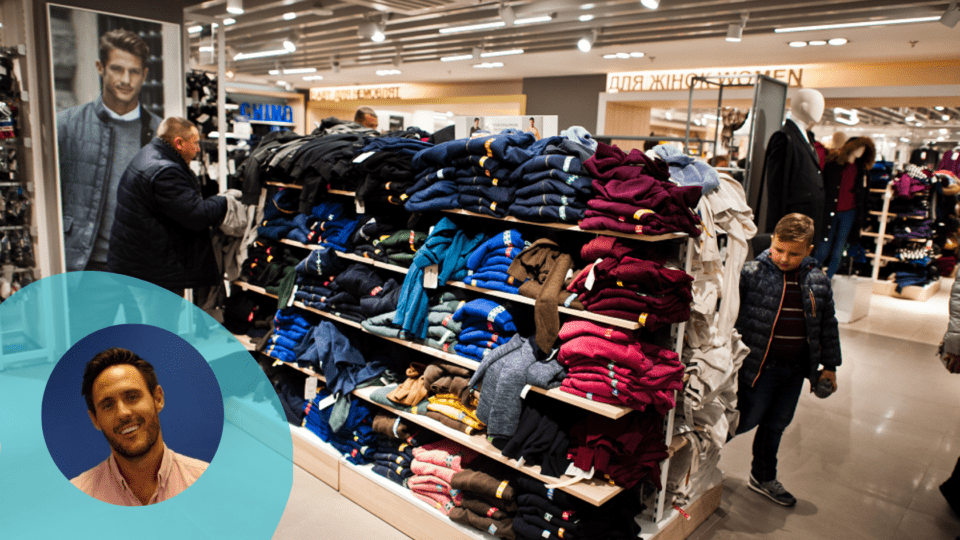The last two years have been a rollercoaster for fashion brands. The supply chain disruptions of 2021 led to many merchants struggling to get their hands on enough inventory, and then overbuying to compensate. But now, with an economic downturn looming and the threat of reduced spending, companies that overstocked during the pandemic are stuck hoarding mountains of goods in their warehouses that they can’t shift.
In fact, according to a recent survey by Inventory Planner, 44% of fashion retailers have surplus goods they’re desperate to offload, accounting for almost 20% of their entire stock holding. The poll also found that globally, one in four fashion stores wrote off excess stock as a loss last year, at huge cost to the business.
The danger of sitting on inventory for too long is clear. Target saw its shares tumble after it slashed prices to clear out unsold inventory. And British brands Made.com and Joules both recently entered administration after getting caught with massive inventory at just the wrong time.
Mountains of excess stock is a particular challenge for fashion retailers because products start to decrease in value after a while, and the seasonal effect can see items quickly go out of fashion or become redundant. Excess stock also means businesses have less room in their warehouses for new stock, as well as less cash to buy new items and jump on new trends.
How are Brands Dealing with Inventory Issues?
As demand slackens, American and British store chains are sitting on so much inventory that brands, particularly apparel brands, have resorted to offering major discounts. However, these tactics hurt the bottom line, with more than half of retailers admitting it will be difficult to absorb the loss of marking down prices, liquidation or writing off excess stock.
According to Taylor Shupe, who co-founded the sock brand Stance and now runs the clothing manufacturing company FutureStitch, companies are starting to look at different measurements of success: “It used to be that gross margin was the most important measurement, but recently, there’s been the feeling that the measurement that truly matters is inventory,” said Shupe.
Shupe said that contribution margin, or the measure of profitability of each product held in inventory, is becoming vital. As the economic crisis worsens, cutting inventory isa crucial strategic move for all brands.
But not all brands are simply decreasing order volume. While depressed spending may mean that less inventory is better, the conflicting problems of tight supply chains and delayed shipments mean that brands need other solutions to ensure they can continue to optimize cash flow.
Danielle Malconian, CEO of plus-size apparel brand Vikki V, said fear of overbuying was a key factor behind her own inventory planning overhaul of the business three years ago. “To scale online you have to sell more of the same thing to more people and go deeper and deeper into your inventory levels, and that’s risky,” said Malconian. “It’s frightening as a retailer to overbuy — these days you could go out of business. Cash flow is everything. If dollars are caught up in inventory that you’re not able to sell, you can either go out and find more money somehow or you’re in a situation where you have to discount to survive.”
Malconian has been instilling in her team the ideas of protecting the top-selling products and placing less emphasis on lower-selling items, essentially adhering to the 80/20 rule, where 80% of your sales are coming from 20% of your products.
Using inventory planning technology, Malconian’s team receives detailed inventory insights so they can easily identify their hottest sellers and accurately replenish their collection of plus-size garments right down to color, style, size and other variants, in order to create a more optimized inventory with maximum selling potential that also reduces risk.
In a bull market, expanding into new categories and expanding the breadth of your range are good ideas to capitalize on higher demand. But a recessionary environment calls for a different strategy.
All merchants — especially those in apparel — need to work out what’s working and contributing to profit and take a granular approach to analyzing data on a daily and weekly basis. When we speak to retailers, we tell them they must get serious about clearing out what’s not working and making sure that every dollar they have in inventory is performing.
The threat of sitting on so much inventory is very real. Apparel retailers need solutions that allow them to quickly see where they do and do not have demand, so they can easily identify what needs to be cleared out to free up cash. Make no mistake, cash is king, and right now it’s more critical to a retailer’s survival than ever before.
Mark Hook has 12 years of experience leading global PR, brand and communications strategy for major brands. His background is diverse, having worked in senior agency and in-house positions across a range of sectors, including B2B, tech, consumer and health. An expert in utilizing storytelling to build brand, Hook has carved out a stellar reputation as being one of the top storytellers in SaaS and ecommerce. He currently serves as VP of Global Brand, PR and Comms at Inventory Planner by Sage.




